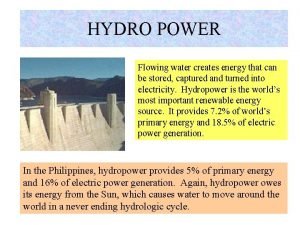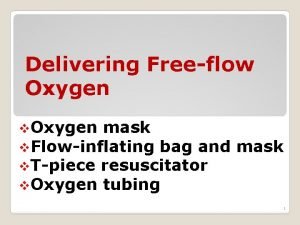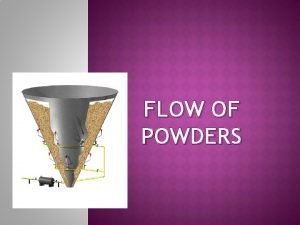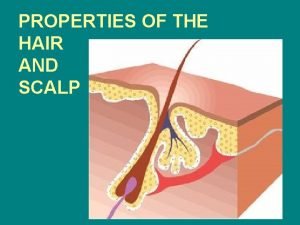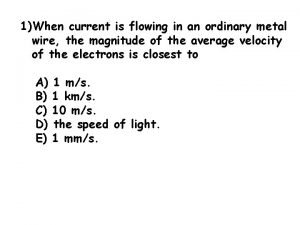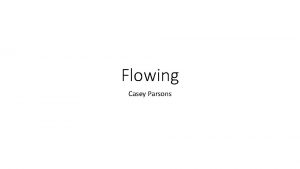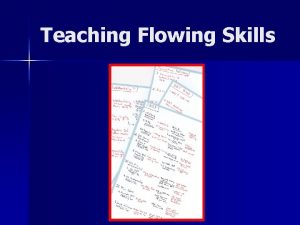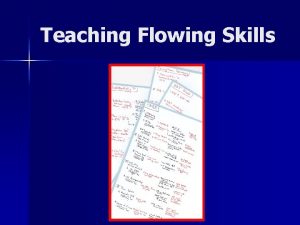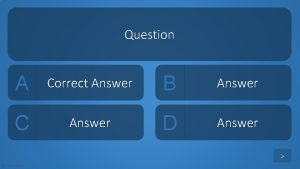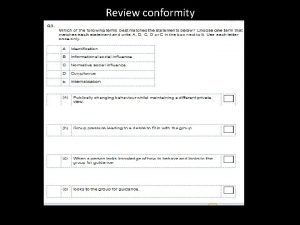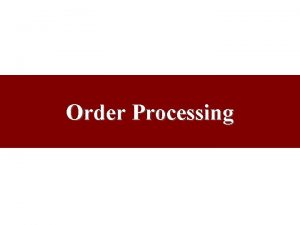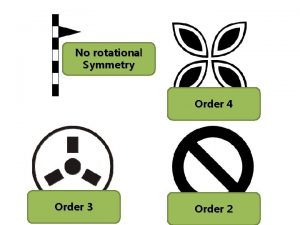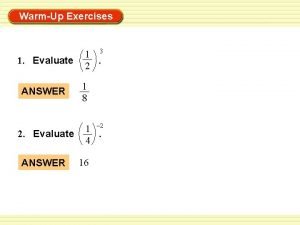Flowing What is flowing In order to answer















- Slides: 15

Flowing

What is flowing? In order to answer arguments by your opponents, you must be able to write them down so that you can remember them and respond to them in order. Your flow sheet becomes the notes which you speak from. You must work at improving your flowing and you will never be too good at it. More than any other skill besides speaking itself, flowing is important to your debate experience. . and important to winning.

To Begin With… If you want to use a computer do so after you learn to flow by hand.

WHAT TO WRITE WITH Write in black or blue Use 2 colors – red is a good contrasting one. Use something which moves smoothly over the paper and allows you to write quickly. Use something which does not smear. Use something which is comfortable in your hand. Try a medium point pen, though if you write small use a fine point, and if you write large you can get away with a broad point pen. Always have lots of the right kinds of pens.

WHAT TO WRITE ON Most people use unlined white paper, usually letter size. Some use card stock because it lays flat on the palm of one hand making it easy to use standing straight up

Using Columns It is always smart to PRE-FLOW your case before you enter the round. Use one column for each of the constructive speeches 1 AC, 1 NC, 1 AR, NR, 2 AR Rebuttals are flowed beside the claims that they answer. You flow the responses to the rebuttals to your points beside the rebuttal points that they apply to.

What to Flow NOT the opening quotation, BUT yes the opening thesis The pre-standards arguments {LD} Framing = PF The V, the VC, the Burden, the observation. {LD} Observations = PF The definitions, especially the abusive ones. The contentions , numbered C 1, C 2 The sub points ,

What else to flow Overviews, under views, turns, theory arguments {more in LD} In short your flow should be a record of what your opponent claims and how you have responded. You will get better with practice…

Note the arrows

note the vertical lines Note the space

LEAVE ROOM ON YOUR FLOW Write DOWN the page, not across it! {LD} PF = some, like Mr. A , write across the page. You need to place arguments beside the arguments they answer. You may have some issues continue over several speeches. AC – NC – 1 AR – 2 AR = LD, AC – NC – AR – NR – A SUM – N SUM=PF

Other Things Flow the Aff and Neg on different pieces of papers. As a speech is given, you write down what is being said in that speech's column. If, for example, it is a negative argument against the case made in 1 NC you would flow it on the case pad, in the 1 NC column, next to the part of the case the argument clashes with. But it is very important not to crowd things together. If things are all packed together on your flow it will be hard to refer to it and read from it when you are speaking Also, when you flow issues just being introduced into the debate (affirmative case, negative counterplan, etc. ) do not try and put them one right under another on your flow. . . space them out. Leave open space in the beginning and then it will be there if and when you need it.

SYMBOLIC VOCABULARY People speak more quickly than you can write, therefore your flow will not contain a word for word version of what you and/or your opponents say, but it will (hopefully) contain a shortened and meaningful version of the idea they are expressing. One useful way to do that is to use symbols to stand for concepts we commonly encounter in an argumentative situation. By turning their statements into a new symbolic and abbreviated form, we can boil down what they are saying into what they mean.

SYMBOLIC VOCABULARY Abbreviate EVERYTHING! = , // , o/w, T , IR, J, SC, [spiral], H=harm SV=solvency, OV, BRD, V, VC If you are making an abbreviation for the first time try just leaving the vowels out, thus"hospital"becomes"hsptl. "

For every topic, you will develop symbols for the most commonly used ideas/terms For this topic, for example The United States Ought to Provide a Universal Basic Income. What are some symbols/abbreviations we can use?
 1st order 2nd order 3rd order neurons
1st order 2nd order 3rd order neurons When flowing water is captured and turned into
When flowing water is captured and turned into Exposure personification
Exposure personification Free flow oxygen mask
Free flow oxygen mask Water flowing downslope along earth's surface
Water flowing downslope along earth's surface Iced east winds that knive us
Iced east winds that knive us Heat flowing out of earth as it cools is one form of
Heat flowing out of earth as it cools is one form of Force of moving water
Force of moving water Force of moving water
Force of moving water Angle of repose in pharmacy
Angle of repose in pharmacy A tiny groove in soil made by flowing water
A tiny groove in soil made by flowing water Hair cowlick definition
Hair cowlick definition Deu nexia fan sensornexia fan sensor
Deu nexia fan sensornexia fan sensor Difference between charge and electric charge
Difference between charge and electric charge Boyle's air pump
Boyle's air pump When current is flowing in an ordinary metal wire
When current is flowing in an ordinary metal wire

